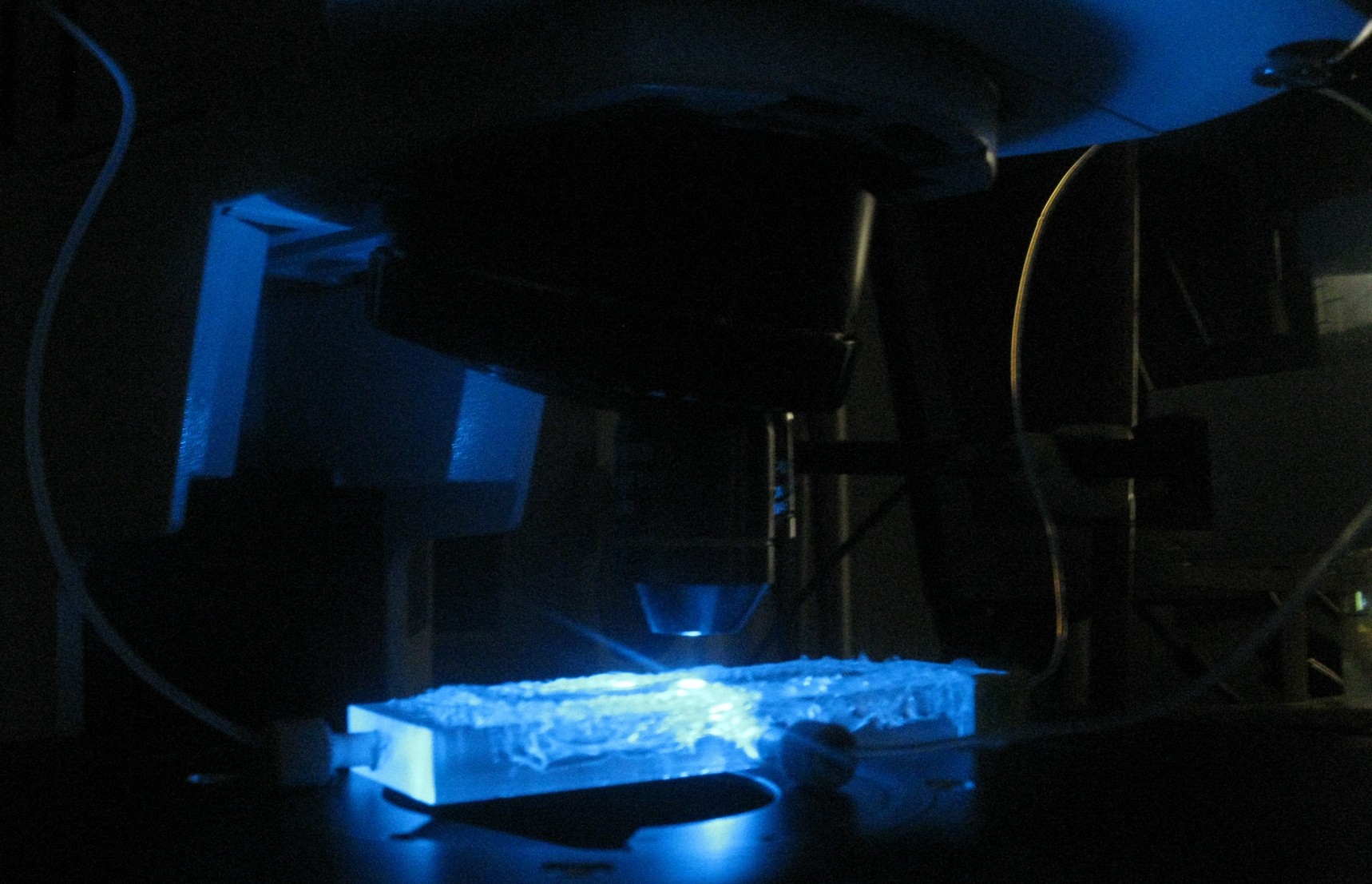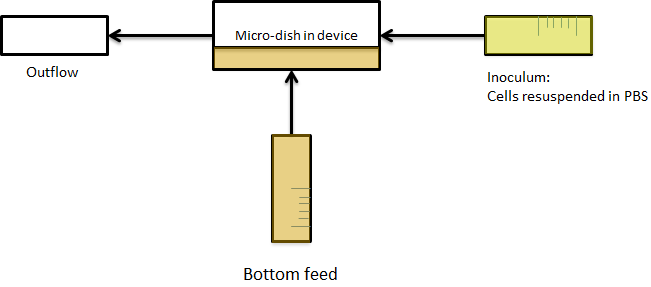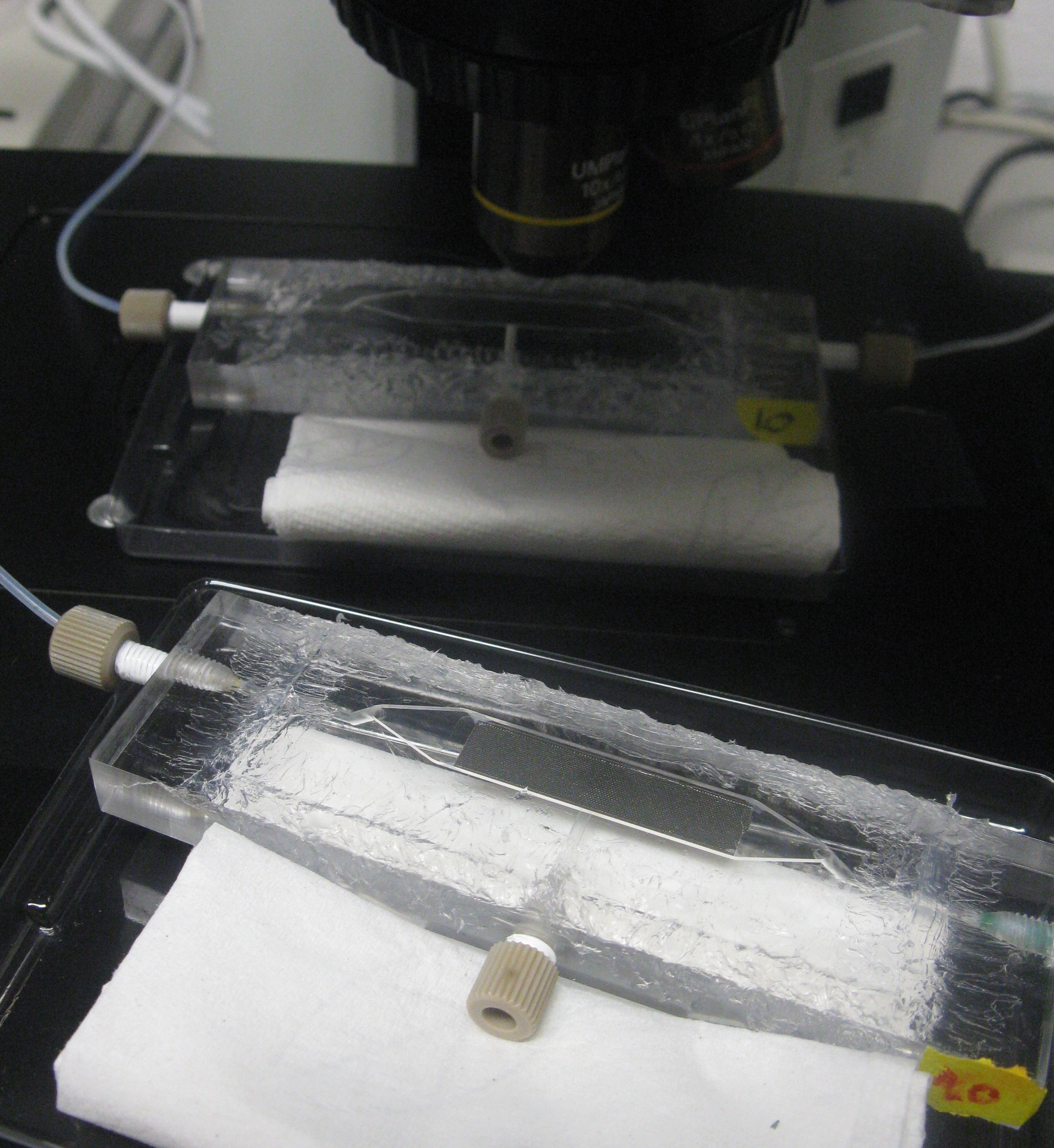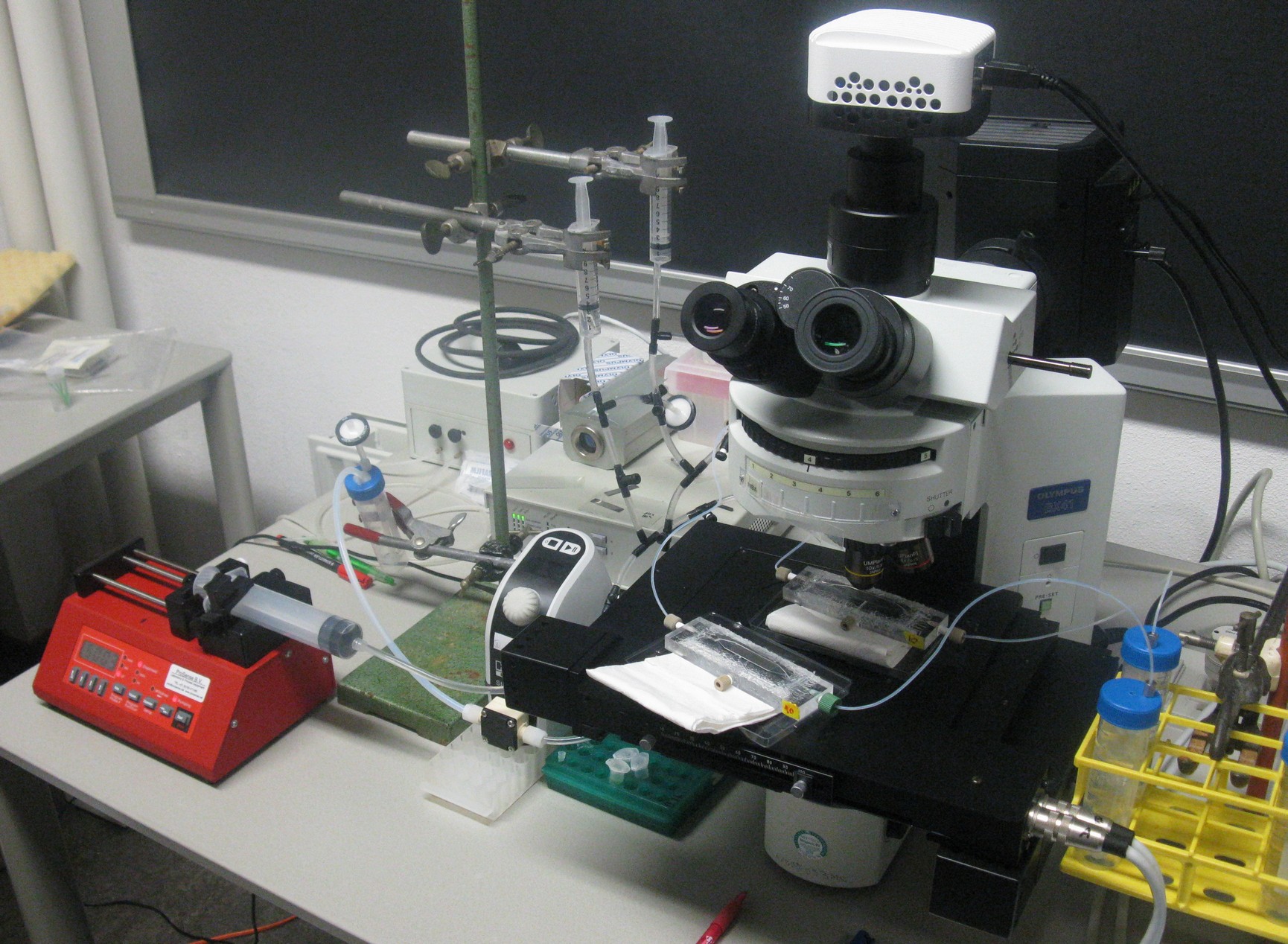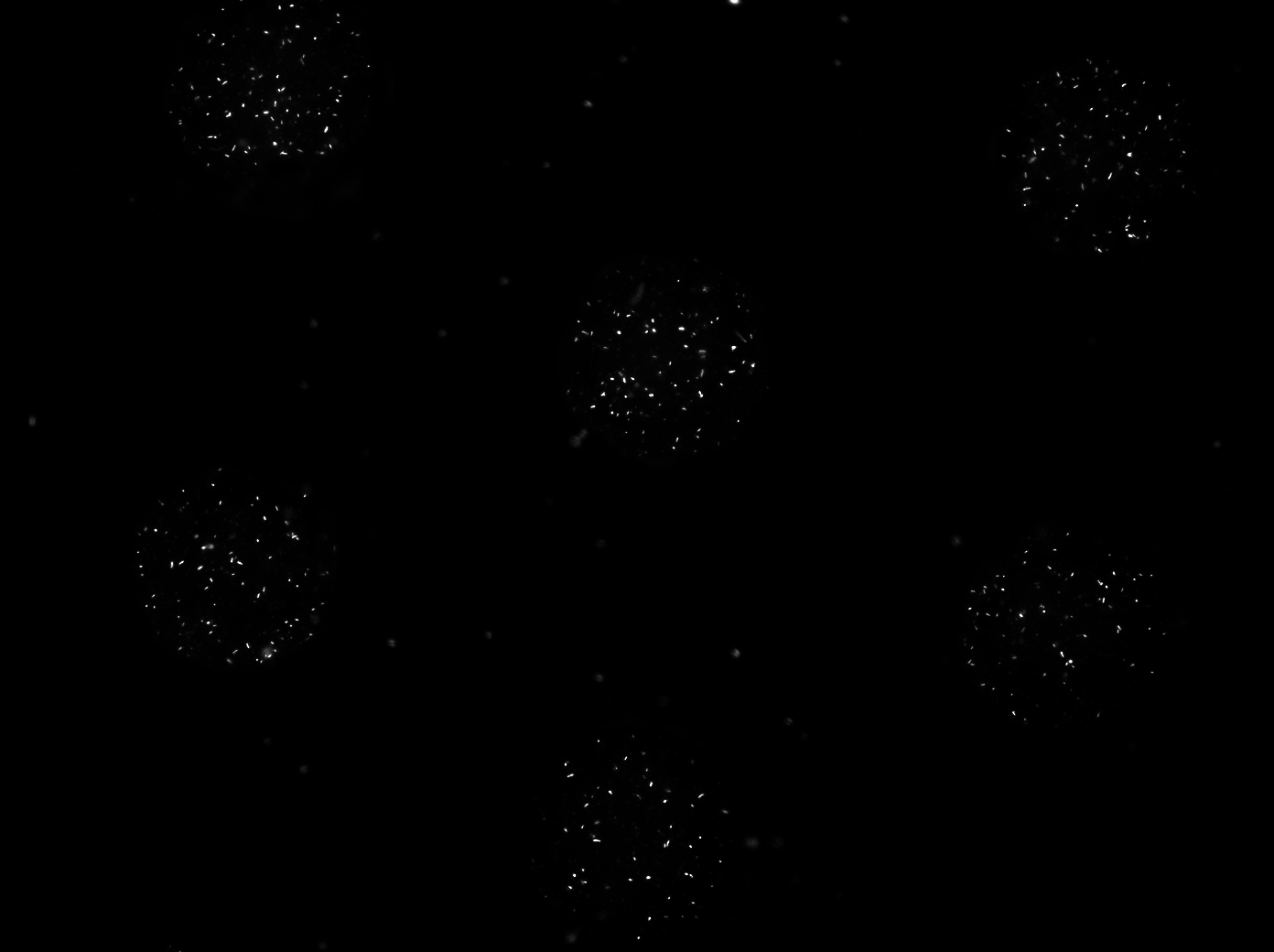Team:Wageningen UR/Project/DevicesSetup
From 2011.igem.org
(→Custom fluidic device designed by Team Wageningen UR to measure oscillations) |
(→Custom fluidic device designed by Team Wageningen UR to measure oscillations) |
||
| Line 24: | Line 24: | ||
=== Setup === | === Setup === | ||
| - | + | ||
| + | [[File:Measuring_GFP_WUR.jpg|500px|center]] | ||
| + | |||
| + | |||
In order to physically constrain the bacteria, Hasty used a trapping chamber as depicted in Figure Xsome below. The chamber had the dimensions of 1X1 micron. This limited the cell growth to forming a monolayer (sentence). Excess cells and AHL were flushed away through the main chanel. [REF] | In order to physically constrain the bacteria, Hasty used a trapping chamber as depicted in Figure Xsome below. The chamber had the dimensions of 1X1 micron. This limited the cell growth to forming a monolayer (sentence). Excess cells and AHL were flushed away through the main chanel. [REF] | ||
| Line 62: | Line 65: | ||
| + | As already mentioned in the [[Team:Wageningen_UR/Project/Devices| design]] section of the device, the chamber was constructed in such a way that it was possible to place it under a fluorescence microscope for measuring GFP. | ||
| - | |||
| - | + | [[File:Closeup_device_WUR.JPG|200px]] [[File:Setup_WUR.jpg|500px|right]] | |
| - | |||
| - | |||
| - | + | '''Top:''' ''Devices under the microscope'' | |
| + | '''Right:''' ''Entire setup of the system around the fluorescence microscope'' | ||
| - | + | . | |
| - | |||
| - | |||
| - | |||
| - | |||
| - | |||
| + | [[Team:Wageningen_UR/Project/DevicesSetup#Custom_fluidic_device_designed_by_Team_Wageningen_UR_to_measure_oscillations| back to top]] | ||
| - | |||
| + | By chance an oscillatory behaviour of transfomed ''E.coli'' containing the [[Team:Wageningen_UR/Project/CompleteProject1Description#Streamlined_Design| streamlined construct]] was observed in one of the experiments performed with a plate reader. This suggested oscillations could occur even without applying any flow over the wells. Letting the [[Team:Wageningen_UR/Project/ModelingProj1#Writing_a_modeling_tool_in_matlab| modeling tool]] iterate over a range of cell desities while keeping the flow rate constant at 0 confirmed that [[Team:Wageningen_UR/Project/ModelingProj1#Conclusions_for_our_system| oscillations could occur]] at high cell densities. Therefore the measurements for oscillatory behaviour of the construct were taken without applying any flow. | ||
| - | |||
| - | + | For the experiments, an overnight culture of the cells containing the relevant construct was spun down and resuspended in PBS. The resuspended culture was inoculated in the device and left in the chamber to settle down for a while. Since the bacteria were bottom fed with LB as seen in the set up section in [[Team:Wageningen_UR/Project/DevicesSetup#Controlling_cell_growth| figure X+2]], only the bacteria which settled down in the wells survived, while the bacteria in PBS starved to death. This is shown in the short video below. The pictures were taken every ten minutes. | |
| - | . | + | [[File:PBS_cellgrowth_bottomfeed-1.tif|center]] |
| + | The video shows the micro-dish directly after inoculation, when the bacteria are still floating around everywhere in the chamber. After that the bacteria which are only in PBS start to die, whereas the bacteria in the wells survive. | ||
| + | After letting the bacteria grow in this manner for 2-3 hours, the PBS was removed with the same syringe that was used to inoculate. The chamber was then let to dry out over night. The two pictures seen below show the micro-dish with a ptet-GFP strain growing in the wells directly before and after removal of the PBS. | ||
| + | [[File:ptetGFP_PBS.jpg|350px]] [[File:ptetGFP_PBSremoved.jpg|350px|right]] | ||
| + | For the experiment seen above, the PBS was removed before all the cells died. The procedure varied depending on how well the bacteria grew in the wells. They were left to grow in the device for an additional night and the measurements were then taken in an 10 minute intervall during the next day. This was done for two reasons, for one the chamber had to be completely dried out before measurements could be taken, otherwise the remaining liquid would condense through the heat of the light and blurr the pictures. The second reason was that, as mentioned before, [[Team:Wageningen_UR/Project/ModelingProj1#Conclusions_for_our_system| modeling]] suggested that, when applying no flow, the oscillations would occur only when starting with a high cell density. | ||
| + | [[Team:Wageningen_UR/Project/DevicesMeasuringOscillations#Customary_fluidic_device_designed_by_Team_Wageningen_UR_to_measure_oscillations| back to top]] | ||
| - | [[Team:Wageningen_UR/Project/ | + | }} |
| + | |||
| + | <!-- | ||
| + | Another concern for the setup of the device was to be able to gain control over the flow rate. According to Bernoulli's principle, the velocity of a fluid can be influenced by varying the height of the medium bottle. This approach was also used in the paper cited above. Figure X. shows the corresponding setup and the applying equations. | ||
| + | |||
| + | [[File:Scheme_setup1_WUR.png|400px|left]][[File:Setup1_WUR.JPG|250px]] | ||
| + | |||
| + | |||
| + | [[File:Equations_bernoulli_WUR.png|center]] | ||
| + | |||
| + | '''Fig.X:''' ''Setup of the device using Bernoulli's principle to control the velocity of the fluid.'' | ||
| + | |||
| + | However, as described on the [[Team:Wageningen_UR/Project/ModelingProj1#Conclusions_for_our_system| modeling page]], the dimensions of our fluidic device did not allow the aimed for precise control over the flow rate. This was tested both by calculating some theoretical values applicable for our device and running pilot experiments with water. Furthermore the obtained flow rates were also much faster than the flow rates in which oscillations were to be expected. This was solved by expanding our setup to incorporate the use of a syringe pump which controls the inflow. Figure X+1 shows the new setup. | ||
| + | |||
| + | [[File:Scheme_setup2_WUR.png|500px|center]] | ||
| + | |||
| + | '''Fig.X+1:''' ''Setup of the device using a pump to control the velocity of the fluid.'' --> | ||
| + | |||
| + | {{:Team:Wageningen_UR/Templates/Style | text= __NOTOC__ | ||
}} | }} | ||
Revision as of 17:53, 20 September 2011
 "
"



